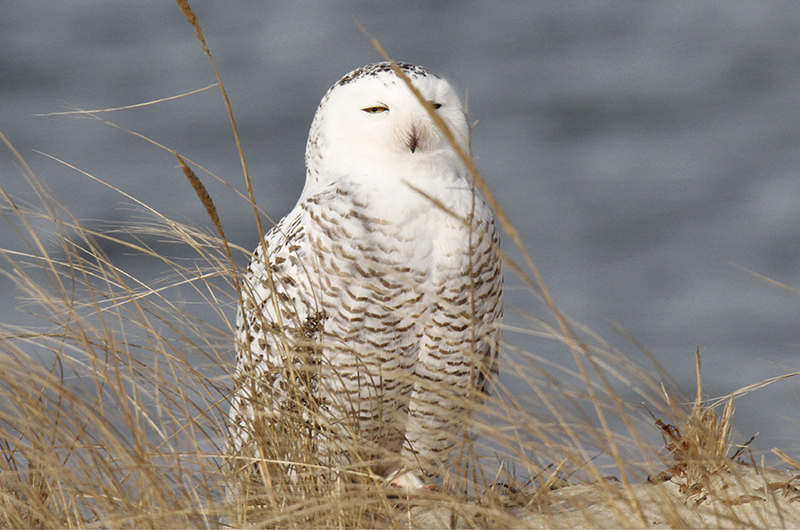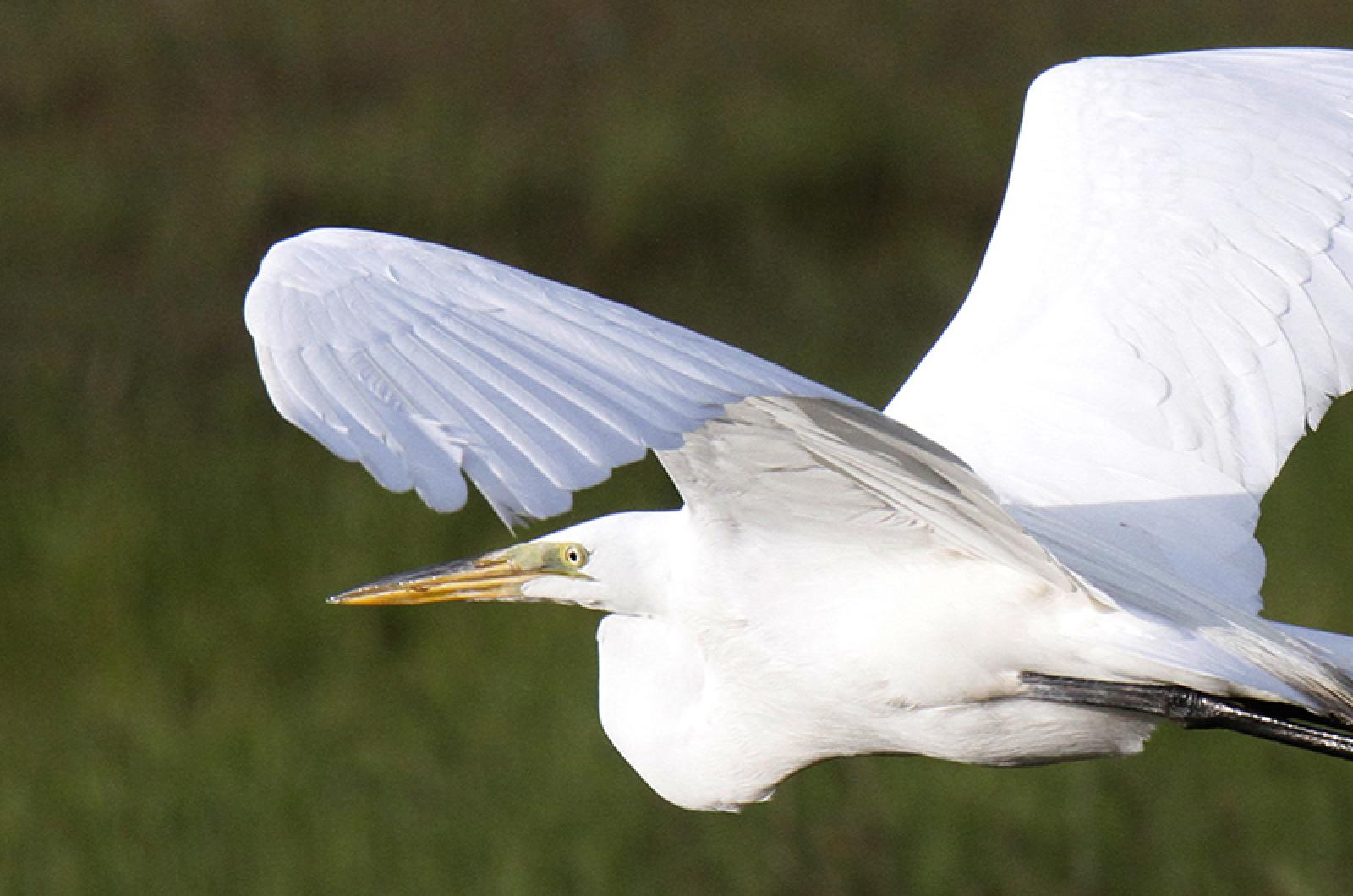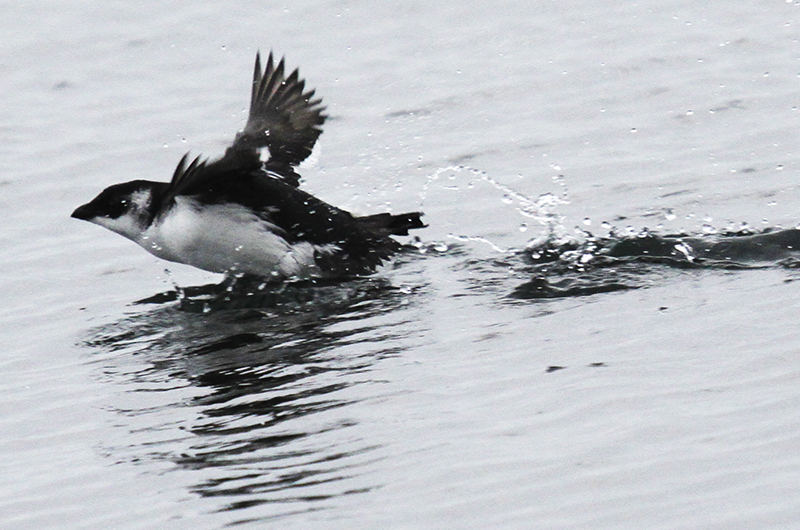So why was there a great egret in a salt marsh at Tom’s Neck on Chappaquiddick on Feb. 9? If they read the books, they would know that they are supposed to be in the southeastern states if not Central America for the winter. Of course they can’t read, so Bob Shriber found one there when he birded Chappaquiddick. This may be the first February record for this species, even though they are fairly common here from April to November.
There are several reports of great egrets from December and January in New England on the website ebird. So there are at least one or two birds wandering around, and now they made their way here. This species can do quite well fishing in our marshes as long as the water does not freeze. If it does it will either head further south or pay the price for staying too far north through the winter. If it survives the winter, it will be able to arrive at its nesting colony earlier to stake out the best territory since its northward migration would be so much shorter.
Bird Sightings

Bob Shriber counted 120 individuals of 20 different species on Feb. 9 as he birded Chappaquiddick. That is a discouragingly low number since several waterfowl species numbered in the thousands of individuals only 20 or so years ago. Another highlight of his birding was the second snowy owl report of the season, an adult male. This column will not reveal its location as any disturbance by his human admirers will force him to use energy that he needs to survive and for his northward migration back to the Arctic. Mike Thompson also saw the owl on the same day.
The reduced numbers of waterfowl in recent years has been frequently reported. Just this week, Luanne Johnson and Margaret Curtin noted very few of the usual waterfowl along Edgartown’s south shore on Feb. 9. Also that day, I found very few waterfowl off the entrance to Lake Tashmoo. It is hard not to get discouraged by the low numbers.
It is not all doom and gloom, however. Clint Merrill spotted two juvenile bald eagles in West Tisbury on Feb. 5, and I still get occasional reports of adult bald eagles as well.
Matt Pelikan spotted an uncommon species from the ferry as he headed to Woods Hole on Feb. 9. Birding from the front of the ferry, he spotted a dovekie which was so close to the boat that he thought there might be a collision. These tiny seabirds are excellent swimmers, of course, and one quick dive gets them easily out of harm’s way.
The northern shrike is still hanging around in Lobsterville as Bob Shriber was able to find it on Feb. 4. He reports that it is hard to find. It is also very active and quickly disappears from view so watching it for any length of time is difficult. Mr. Shriber also spotted a similar-looking northern mockingbird there.
On Feb. 8 Margaret Curtin reports that the downtown Edgartown peregrine returned to its perch atop the whaling church in Edgartown after several weeks of absence.
That day, Danielle Belleny visited the northern end of Lagoon Pond near the drawbridge, and reports American wigeon, common eider, bufflehead, common goldeneye and common loon.
Hans Goeckel spotted a flock of snow buntings at Crackatuxet Pond on Feb. 9.
Bridget Dunnigan has had two pine warblers visiting her feeder regularly in recent weeks.
In last week’s column I asked whether anyone had seen our winter resident fish crows recently. I did not receive any sightings and I was unable to locate them around Vineyard Haven Harbor or at Farm Pond, their two usual haunts in the winter. Our commuter crows are still coming, however, as on the afternoon of Feb. 9, I counted 941 fish crows and 520 American crows arriving on the Vineyard between the entrance to Lake Tashmoo and as far west as Makoniky. The two similar species can be identified by their size, vocalizations, and differing patterns of wingbeats as they fly. Other notable sightings were northern gannet, long-tailed duck, American wigeon and sanderling.
Closing on a positive note, Gus Ben David reports signs of the coming spring as red-tailed hawks are starting to show their territorial behaviors. And the few ducks that are around are showing off their territorial aggressiveness; listen and look at the males as they jerk their heads back to their backs and make interesting sounds.
The first north-bound migrants will show up soon! Please report your sightings to birds@mvgazette.com.
Robert Culbert is an ecological consultant with Nature Watch LLC living in Vineyard Haven.








Comments (1)
Comments
Comment policy »